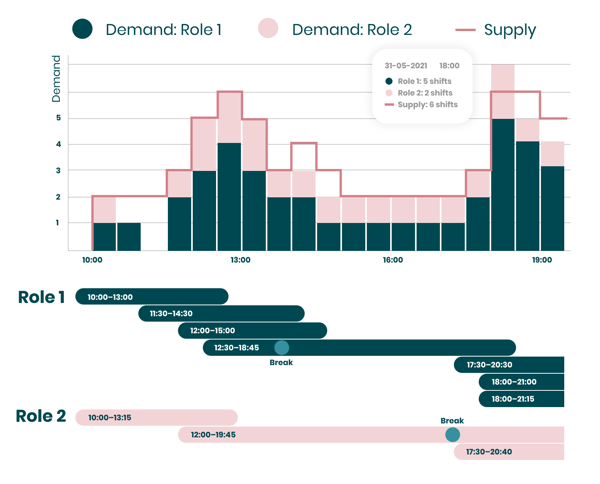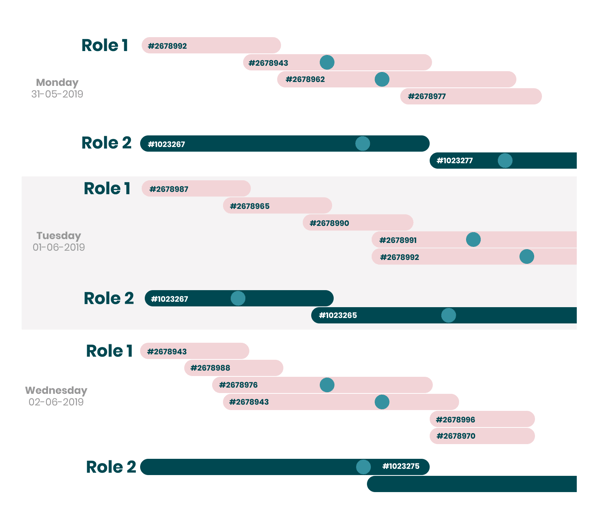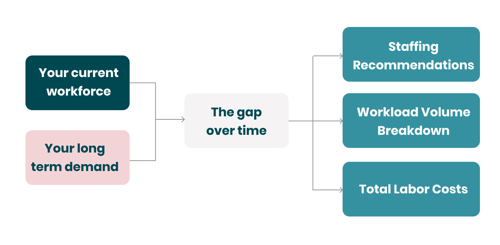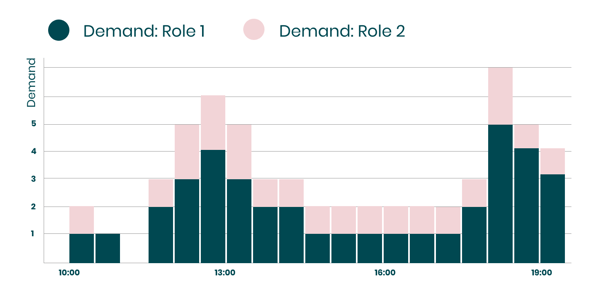‘Employee Happiness’ is no longer just a buzzword that companies use to attract new talent; compliance with new labor legislation is genuinely enhancing the employee experience. Shift workers around the world are receiving more protection from labor laws, enabling them to enjoy predictable work schedules. In essence, these laws make shift scheduling as transparent, predictable and fair as possible for employees.
Shift workers are gaining more control over their lives, allowing them to plan their work and personal schedules in advance. In general, this has a strong positive effect on Employee Happiness. As a result, these happy employees are likely to perform better in the workplace, providing better service and even increasing sales.
However, while shift workers see great benefits to their schedules and lives, managers face the challenge of staying compliant and creating schedules that adhere to these new laws. It appears that the predictive scheduling trend is here to stay and we must ask; how can employers stay ahead of the curve?
Recap: Predictive Scheduling Laws Explained
Before we dive into how AI technology can help you to be fully Predictive Scheduling compliant and automates that process, let’s refresh our minds on what we’re dealing with here. US Predictive Scheduling laws are being created to provide employees with more predictable work schedules. Employers in certain industries are required to provide their employees with advance notice of their schedules. Any changes to schedules outside of the allotted time frame can result in premiums that have to be paid to the employee. If employers fail to comply with the laws, they are subject to hefty fines and perhaps more damaging: a bad brand reputation.
What do I have to comply with?
While the details of the Fair Workweek Act vary from state to state, there are some common requirements featured in many laws. These are:
Up to 14 days of written work schedule notice
Employees should receive their work schedules up to 14 days in advance of the first scheduled shift.
Premium pay for schedule changes
When schedules change without adequate or timely notice, employers must pay their employees a premium for these changes when they have initiated the change. For example: on a slow day, an employee can request to clock out early. However, when you decide to send someone home earlier than planned or when you request that they work an extra shift, a premium is typically due.
More rest in between shifts
Employees now have to be paid a premium when they are scheduling for ‘clopenings’, in some cases even when they opt into these types of shifts.
Additional work goes to your own employees first
Employers must offer additional hours to current employees before making a new hire.
New hires get an estimate of their anticipated workload
You are required to give each employee a ‘good faith estimate’, which is an expected work schedule at the time of hire. Deviations from this projected schedule require the employer to issue a new good faith estimate.
How Predictive Scheduling Impacts Your Business
Now, to be 100% clear: you don’t have to change anything in your scheduling process, and you can still be compliant as long as you pay those extra premiums when changes are initiated by you, the employer.
Some companies may try to beat the system and find ways to avoid premiums. We’d argue that this is unnecessarily risky: predictive scheduling laws are designed to provide protection for employees. Avoiding premiums can result in significant fines, bad press for the brand, and additional financial impacts on stock prices, future sales, etc. Instead of avoiding premiums, we suggest minimizing them by focusing on creating the right schedule in the first place. What does it take to build better schedules within the construct of predictive schedule laws? We’ll start with some of the challenges:
Predictive Scheduling laws force you to look further into the future.
Your employees benefit from having more advanced knowledge of their schedules, but how do you know what to expect in terms of demand 2+ weeks out? Perhaps you have weekly sales goals, but how do you know when to start and end your shifts to create efficient schedules: cover the busy times and have fewer people on staff when it’s slow.
Risk of lost sales increases due to insufficient staffing or facing extra costs due to overstaffing.
Releasing schedules in advance reduces your responsiveness to demand fluctuations. It is hard to predict demand 14 days out and this may cause you to lose both time and money. Over time, your business may miss sales opportunities and traffic peaks due to understaffing or labor costs will rise due to overstaffing with little room to adjust because shifts were created in advance. Moreover, you become less flexible to account for specific demand trends or special occasions such as holidays, conventions, or sporting events which consequently could lead to inaccurate demand forecasts and substandard staffing.
Complex premium rules are hard for store managers to track and follow.
Imagine the best-case scenario: your store managers are aware of the predictive scheduling laws and ready to comply. How can you be sure that they apply the laws correctly and pay the correct premiums? Even managers working with the best intentions can make mistakes, miss payments, or incorrectly pay premiums.
The AI approach to fully comply with the Predictive Scheduling Law
Encouragingly, technology can help make the predictive scheduling process easier, faster, and more efficient. AI technology will help you take all scheduling factors into account to automatically build compliant rosters, relieving the pressure off your rostering and allowing you to focus on further cultivating a happy workforce.
Be prepared now and in the future
At a strategic level, you must always look at the amount of staff you will need in the future and whether your current number of employees will be able to cover the demand. With Predictive Scheduling Laws, you also need to give new employees an expected work schedule at the time of hire and assign new positions to current employees first. In the long run, you need to account for these factors when creating your labor budget and deciding on your flexible or permanent employee mix. This will inform decisions on when to hire or reallocate. How can this be done in the most effective way?
With Workforce Capacity Planning you will get insights into your long-term staffing needs and can act accordingly by running various scenarios to model different hiring strategies.
First, you will be able to see what your demand will look like in terms of sales, footfall, and transactions. This can be viewed on different levels, from the whole organization to a specific store. Then you can examine the supply side and see what your labor budget should look like. Finally, you can make decisions on who should be hired and when, as well as the type of contracts that best allow you to match your supply and demand. Running different scenarios also allows you to see and compare how these potential changes may impact your labor budget. This way, you can serve your customers properly, provide an accurate workload estimation to a new hire or divide the work over your current employee pool.
How it Works | Workforce Capacity Planning
Graph 1: In order to determine long-term staffing needs and to provide a good faith estimate, you need to identify the gap between your current workforce composition and future demand. Taking Workforce Capacity Planning algorithms, you can get insights into actionable points to consider.
Schedule weeks in advance with confidence
With Labor Demand Forecasting, you’ll achieve highly accurate predictions of future customer demand. As Predictive Scheduling laws require you to release schedules further in advance, and last-minute changes incur premiums, you need highly accurate demand forecasts in order to create viable rosters and minimize schedule changes. If not, you risk understaffing which results in lost sales and long customer lines, or overstaffing which results in unnecessary workers on shift and extra labor costs. To be as accurate as possible, demand forecasts should take into account the external factors that influence demand, such as seasonality, holidays, local events, and promotions. Overall, your schedules under Predictive Scheduling allow for fewer last-minute changes, which means that better demand forecasts are key to building efficient schedules.
With Labor Demand Forecasting you will be able to ensure that you will always have the most accurate demand forecasts for each and every location. This means that you can release schedules weeks in advance and you don’t need to make as many last-minute shift changes because of unexpected demand fluctuations.
How it Works | Labor Demand Forecasting
Graph 2: An accurate forecast displayed. Here you see that demand peaks differ per time of day: that level of granularity allows you to staff even better by knowing when during the day to bring in additional employees to cover the demand. To get highly accurate forecasts, you need to forecast on the restaurant or store level as that’s the only way you can account for local factors that influence demand, such as seasonality and promotions. To further increase forecast accuracy, you want to use a fitting forecasting method. An easy way to pick the best method is by using hyperlocal forecasting services equipped with a mass-customization feature.
Make solid shifts that meet your business goals
With Automated Employee Scheduling, you can automatically create shifts that:
- Adequately cover the customer demand
- Include compliant breaks at times that best fit the demand
- Follow the relevant labor laws and business rules
- Reduce costs while improving efficiency and performance
Once you have accurately forecasted your demand, our AI services automatically translate that into shifts and tasks, making sure that demand is fully covered and every customer gets the help they need. The schedules that flow from the demand take into account the desired service levels and labor standards. This process creates efficient schedules that meet your business goals.
How it Works | Shift Creation

Graph 3: Translation of demand into shifts. Here you can see compliance to shift rules that require shifts to be at least 3 hours long and enforcement of breaks while minimizing under coverage of demand and amount of shifts. The more rules are added, the more it makes sense to let automation technology propose shifts.
Give your employees rest without stress
Now that you’ve accurately forecasted demand and created the appropriate shifts to cover it, it’s time to assign employees to these shifts. With Automated Employee Scheduling, you can assign shifts to your employees based on skills, contract hours, and personal preferences. Automatically take their availability and previously worked shifts into account in order to enforce required rest time in between shifts. Consequently, you can also beat turnover by assigning your employees fairly to shifts that fit their preferences, giving them the opportunity to plan their personal lives around their schedules better.
How it Works | Shift Filling

Graph 4: In order to assign employees to shifts, we take the predefined shifts and look at all the employee input data to find the best match with the shift requirements.
Compliance checking: are you doing what you have to do?
Your schedules will never be 100% resistant to change. Employees will call in sick, you will have a temporary shortage of employees, or you will need one of your employees to work an extra shift because of that unexpected demand peak. In order to fully comply with Predictive Scheduling laws, you need to make sure that each applicable change is compensated with a premium. That’s where compliance checking comes in, which allows you to keep a list of every change and to make sure you pay the premiums your employees are entitled to. Through anomaly detection, our algorithms flag cases where premiums may have been missed or meal or rest breaks were none compliant. This detailed automated analysis means you have all the information you need to empower your managers to stay compliant with the predictive scheduling laws.
Are You Prepared?
The Predictive Scheduling laws force companies to look more critically at the current composition of their workforce and the way they are scheduled. For companies with a large workforce, i.e. a mix of permanent, flexible, and temporary employees, this is an even greater challenge. Fortunately, complying with Predictive Scheduling laws in your scheduling is now easier than ever, because you can use technology to look further ahead and automatically create schedules. This technology will make the scheduling process less complex and time-consuming. You will be compliant with Predictive Scheduling Laws in the most efficient way possible, without losing sight of your business goals.
As labor laws evolve and improve employees’ work lives, businesses must also innovate in new ways to stay ahead of the game. Leveraging technology as a key asset in your toolbox that can rapidly advance your company’s workforce management. Driven by artificial intelligence and various algorithms, scheduling becomes reliable, cost-effective, and clear. This reduces premiums, avoids fines, and enhances brand reputation, positioning your company as a cutting-edge, compliant employer that is genuinely committed to employee happiness and fair scheduling practices. Looking ahead, the future of workforce optimization is bright; an automated workforce optimization solution is beneficial to all and results in happier, more productive teams.
![<p data-pm-slice="1 1 []">Read more</p>](https://hubspot-no-cache-eu1-prod.s3.amazonaws.com/cta/default/1545537/interactive-303378350296.png)



